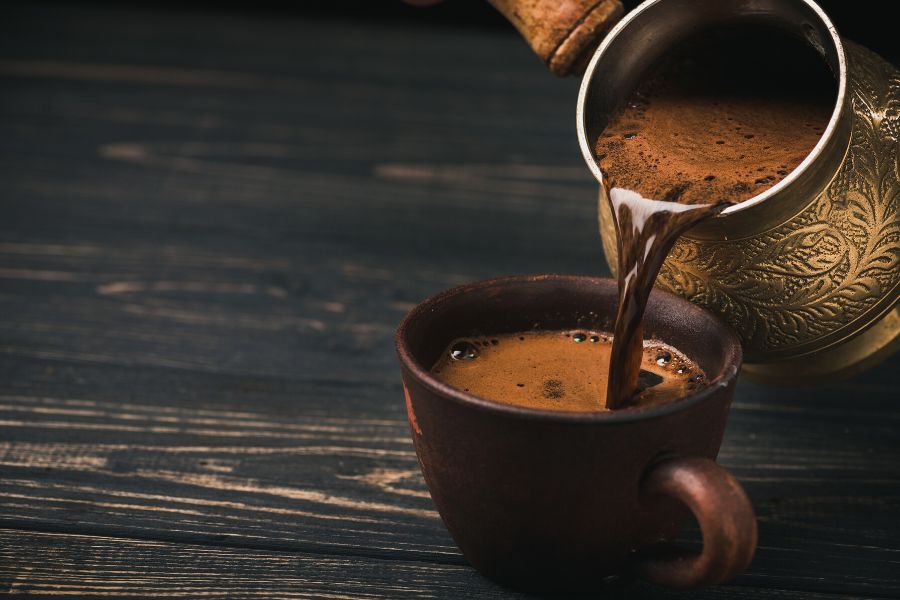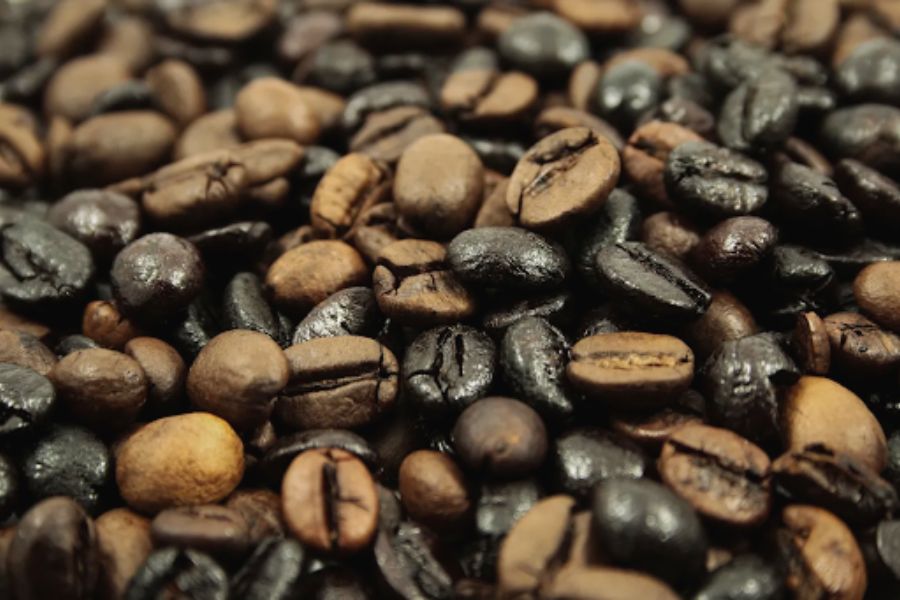Turkish Coffee vs. Espresso
Turkish coffee vs. espresso — not everyone knows what differentiates one from the other. Sure, they’re both rich, delicious beverages brewed from finely ground coffee beans, but that’s where their similarities end.
From the roasts that work best with each brewing method, the actual brewing process, to how each one is drunk — you’ll never mistake one for the other again. Each beverage has its own distinctive style.
These are two of the oldest styles of coffee in the world, and both are fantastic in their own right. But before you can determine your favorite, you should understand the intricacies of each one. Here are some topics we’ll cover to do that:
What Is Espresso?
Espresso is a type of coffee you brew using high pressure to force steam through the coffee grounds — something that can’t be replicated through other methods. This produces a rich, intense beverage.
A single shot of espresso is about one to 1.5 ounces, although many people prefer a double shot. Espresso can be drunk by itself, but it can also be used as a starting point for other drinks like lattes, cappuccinos, or flat whites.
Espresso originated in Italy in the early 1900s, while the first practical espresso machine is credited to Luigi Bezzerra and Desiderio Pavoni. And, to create true espresso, you must have an espresso machine, either manual or automatic.
What Is Turkish Coffee?

Thought to have originated in Turkey in the 1500s, Turkish coffee isn’t at all like espresso, since pressure isn’t required for brewing. Traditionally, it’s made using a cezve, a brass or copper pot with a long handle, but that’s not a strict requirement for brewing.
The coffee grinds are boiled in water, and sugar or other spices may be added — to the pot, not individual cups — for a stronger flavor. When the coffee is ready, foam will rise to the top, and by pouring the liquid slowly into a cup, you can maintain that foam. A Turkish coffee cup can hold around 2.5 ounces.
Unlike espresso, you won’t be using Turkish coffee to create other drinks. It’s meant to be enjoyed on its own.
Espresso vs. Turkish Coffee Beans
The preferred coffee beans for espresso and Turkish coffee are not the same. Espresso can be brewed with either Arabica or Robusta beans, or even a blend of both. Robusta beans give espresso more of a kick. However, Turkish coffee is usually only brewed with Arabica beans, which are known for their rich and smooth flavors.
Turkish Coffee vs. Espresso — Roast
Technically, you can use whatever roast you’re partial to for both espresso and Turkish coffee. However, the preferred roasts for espresso vs. Turkish coffee are different. Dark roasts are favored for espresso, as it has more of a smoky flavor that many espresso lovers can’t get enough of.
Light roasts are preferred with Turkish coffee. This is because Turkish coffee takes longer to brew, and light roasts can handle a lengthier extraction time. Dark roasts can be over-extracted, resulting in bitter coffee.

Espresso vs. Turkish Coffee — Grind
You likely already know that when grinding beans for espresso, you must grind them very finely. Typically, ground coffee for espresso is about 400 microns thick. For Turkish coffee, you need to grind even more finely. Somewhere between espresso grind and powder, coffee ground for Turkish coffee should be around 200 microns thick.
These are not interchangeable. If you try to brew espresso with a Turkish coffee grind, you’ll clog your portafilter and have difficulty brewing. The reason for grinding beans so finely for Turkish coffee is due to it being unfiltered. Grinds will make it into your cup, with a gritty layer at the bottom of your drink. These are more tolerable with a super fine grind.
Turkish Coffee vs. Espresso Brewing Time
Much like brewing methods are different for espresso vs. Turkish coffee, their brewing times are also contrasting.
It takes about 30 seconds to pull a single shot of espresso. If you need more than that, you must start the process all over again. For Turkish coffee, a cezve typically holds four to 10 ounces, so you can brew at least two to three servings at a time. It’ll take at least two to 3 minutes to brew after the coffee mixture is prepared. So, while it’s faster to brew espresso, you’ll have to do it again and again if you want more.
Espresso and Turkish Coffee Drinking Experience
Although both espresso and Turkish coffee are rich and strong, and served in small amounts, the drinking experience differs with each.
Espresso has a finer, smoother texture and taste. It’s also meant to be drunk quickly as a shot, rather than sipped. Turkish coffee, on the other hand, is intended for sipping and savoring. Turkish coffee isn’t filtered, which results in layers of texture. The top layer is frothy, the middle layer is smooth and rich, while the bottom layer is gritty and somewhat muddy. Because of that grit, Turkish coffee is often served with a glass of water.

Turkish Coffee vs. Espresso — Which One Is Better?
Objectively, there’s not a clear winner here. Espresso is the most useful of the two beverages, as it can also be used in creating other drinks. It’s also much faster to brew espresso, although you’ll have to repeat the entire process if you want multiple shots.
However, if you like to savor your brew, then Turkish coffee may be more your style. It takes longer to brew, and it’s meant to be drunk slowly, rather than knocked back in one like a shot of espresso.
So, regarding Turkish coffee vs. espresso — the former may be more of an acquired taste because of its grittiness, while espresso is significantly smoother. I encourage you to try both and decide for yourself!
Espresso vs. Turkish Coffee FAQs
Is Turkish Coffee Stronger than Espresso?
If we’re talking about flavor strength, there’s no clear winner — both carry intense flavors. However, from the caffeine standpoint, ounce for ounce, espresso is stronger. The caffeine content for one shot of espresso (1-1.5 ounces) is about 64 mg. For Turkish coffee, one ounce equals 25 mg of caffeine, although it may be higher if you consume the coffee grinds.
How Many Shots of Espresso Are in a Turkish Coffee?
There are zero shots of espresso in a Turkish coffee. Turkish coffee is made by boiling water, super finely ground coffee, and spices. Espresso is brewed by forcing heated water and steam through finely-ground coffee using high pressure.
Can I Use Turkish Coffee for Espresso?
You shouldn’t. Turkish coffee requires a finer ground than espresso. This will clog your espresso machine’s portafilter, making it impossible to brew.
Why Is Turkish Coffee So Different?
Turkish coffee is poles apart from other types of brew. It’s brewed in a different fashion, spices are added into the pot before brewing instead of to each cup, and it’s much grittier than other brewed java.
Is Turkish Grind Finer than Espresso?
Yes. Coffee beans for espresso are ground to around 400 microns, while the beans for Turkish coffee are ground to about 200 microns.
Can I Add Sugar to Turkish Coffee?
Of course! If you want to add sugar or any other spice, you should add it to the mixture before heating and brewing. Additions are typically added to an entire pot, rather than individual cups.





